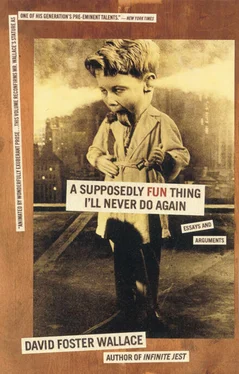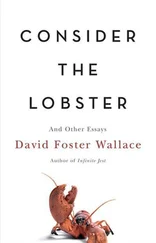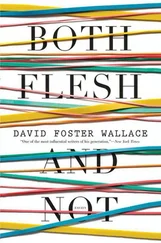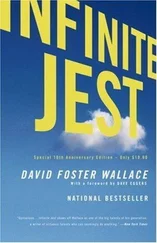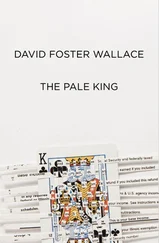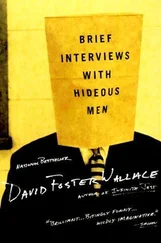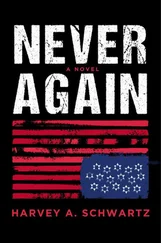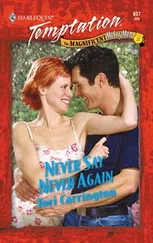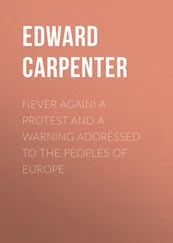Stade Jarry’s Stadium Court is adjoined on the north by the Grandstand Court, a slightly smaller venue with seats on only one side and a capacity of 4800. A five-story scoreboard lies just west of the Grandstand, and by late afternoon both courts are rectangularly shadowed. There are also eight nonstadium courts in canvas-fenced enclosures scattered across the grounds. Professional matches are under way on all ten Stade Jarry courts today, but they are not exactly Canadian Open matches, and for the most part they are unwatched.
The Stade Jarry grounds are all spruced up, and vendors’ tents are up, and Security is in place at all designated points. Big TV trailers line the walkway outside the stadium, and burly men keep pulling complicated nests of cable out of ports in the trailers’ sides.
There are very few paying customers on the grounds on Saturday, but there are close to a hundred world-class players: big spidery French guys with gelled hair, American kids with peeling noses and Pac-10 sweats, lugubrious Germans, bored-looking Italians. There are blank-eyed Swedes and pockmarked Colombians and cyberpunkish Brits. There are malevolent Slavs with scary haircuts. There are Mexican players who spend their spare time playing two-on-two soccer in the gravel outside the Players’ Tent. With few exceptions, all the players have similar builds: big muscular legs, shallow chests, skinny necks, and one normal-sized arm and one monstrously huge and hypertrophie arm. They tend to congregate in the Players’ Tent or outside the Transportation Trailer awaiting rides in promotional BMWs back to the Radisson des Gouverneurs, the tournament’s designated hotel. Many of these players in the “Qualies,” or qualifying rounds, have girlfriends in tow, sloppily beautiful European girls with sandals and patched jeans and leather backpacks, girlfriends who set up cloth lawnchairs and sun themselves next to their players’ practice courts. 6At the Radisson des Gouverneurs the players tend to congregate in the lobby, where there’s a drawsheet for the Qualies up on a cork bulletin board and a multilingual tournament official behind a long desk, and the players stand around in the air-conditioning in wet hair and sandals and employ about 40 languages and wait for results of matches to go up on the board and for their own next matches’ schedules to get posted. Some of the players listen to personal stereos; none seem to read. They all have the unhappy self-enclosed look of people who spend huge amounts of time on planes and waiting around in hotel lobbies, the look of people who have to create an envelope of privacy around them with just their expressions. Most of these players seem either extremely young — new guys trying to break onto the Tour — or conspicuously older, like over 30, with tans that look permanent and faces lined from years in the trenches of tennis’s minor leagues.
The Canadian Open, one of the ATP Tour’s “Super 9” tournaments that weigh most heavily in the calculation of world ranking, officially starts on Monday, 24 July. What’s going on for the two days right before it is the Qualies. This is essentially a competition to determine who will occupy the eight slots in the Canadian Open’s main draw designated for “qualifiers.” It is a pre-tournament tournament. A qualifying tourney precedes just about every big-money ATP event, and money and prestige and lucrative careers are often at stake in Qualie rounds, and often they feature the best matches of the whole tournament, and it’s a good bet you haven’t heard of Qualies.
The realities of the men’s professional tennis tour bear about as much resemblance to the lush finals you see on TV as a slaughterhouse does to a well-presented cut of restaurant sirloin. For every Sampras-Agassi final we watch, there’s been a week-long tournament, a pyramidical single-elimination battle among 32, 64, or 128 players, of whom the finalists are the last men standing. You probably know that already. But a player has to be eligible to enter that tournament in the first place. Eligibility is determined by ATP computer ranking. Each tournament has a cutoff, a minimum ranking required to get entered in the main draw. Players below that ranking who want to get in have to compete in a kind of pre-tournament. That’s the easiest way to explain what Qualies are. In actual practice the whole thing’s quite a bit messier, and I’ll try to describe the logistics of the Canadian Open’s Qualies in just enough detail to suggest their complexity without boring you mindless.
The du Maurier Omnium Ltée has a draw of 64. The sixteen entrants with the highest ATP rankings get “seeded,” which means their names are strategically dispersed in the draw so that (barring upsets) they won’t have to meet each other until the latter rounds. 7Of the seeds, the top eight — here Agassi, Sampras, Chang, the Russian Yevgeny Kafelnikov, Croatia’s Goran Ivanisevic, South Africa’s Wayne Ferreira, Germany’s Michael Stich, and Switzerland’s Marc Rosset, respectively — get “byes,” or automatic passes into the tournament’s second round. This means that there is actually room for 56 players in the main draw. The cutoff for the 1995 Canadian Open isn’t 56, however, because not all of the top 56 players in the world are here. 8Here the cutoff is 85. You’d think that this meant anybody with an ATP ranking of 86 or lower would have to play the Qualies, but here too there are exceptions. The du Maurier Omnium Ltée, like most other big tournaments, has five “wild card” entries into the main draw. These are special places given either to high-ranked players who entered after the required six-week deadline but are desirable to have in the tournament because they’re big stars (like Ivanisevic, #6 in the world but a notorious flakeroo who “forgot ” to enter till a week ago and got a last-minute wild card) or to players ranked lower than 85 whom the tournament wants because they are judged “uniquely deserving” (read “Canadian”—the other four players who get wild cards here are all Canadian, and two are Québécois).
By the way, if you’re interested, the ATP Tour updates and publishes its world rankings weekly, and the rankings constitute a nomological orgy that makes for truly first-rate bathroom reading. As of this writing, Mahesh Bhupathi is 284, Luis Lobo 411. There’s Martin Sinner and Guy Forget. There’s Adolf Musil and Jonathan Venison and Javier Frana and Leander Paes. There’s — no kidding — Cyril Suk. Rodolfo Ramos-Paganini is 337, Alex Lopez-Moron 174. Gilad Bloom is 228 and Zoltan Nagy is 414. Names out of some postmodern Dickens: Udo Riglewski and Louis Gloria and Francisco Roig and Alexander Mronz. The 29th-best player in the world is named Slava Dosedel. There’s Claude N’Goran and Han Shin (276 but falling fast) and Haracio de la Pensa and Marcus Barbosa and Amos Mansdorf and Mariano Hood. Andres Zingman is currently ranked two places above Sander Groen. Horst Skoff and Kris Goossens and Thomas Hagstedt are all ranked higher than Martin Zumpft. One more reason the tournament industry sort of hates upsets is that the ATP press liaisons have to go around teaching journalists how to spell and pronounce new names.
So, skipping a whole lot more complication, the point is that eight slots in the Canadian Open’s main draw are reserved for qualifiers, and the Qualies is the tournament held to determine who’ll get those eight slots. The Qualies itself has a draw of 64 world-class players — the cutoff for qualifying for the Qualies is an ATP ranking of 350. 9The Qualies won’t go all the way through to the finals, only to the quarters: the eight quarterfinalists of the Qualies will receive first-round slots in the Canadian Open. 10This means that a player in the Qualies will need to win three rounds — round of 64, round of 32, round of 16—in two days to get into the first round of the main draw. 11
Читать дальше
